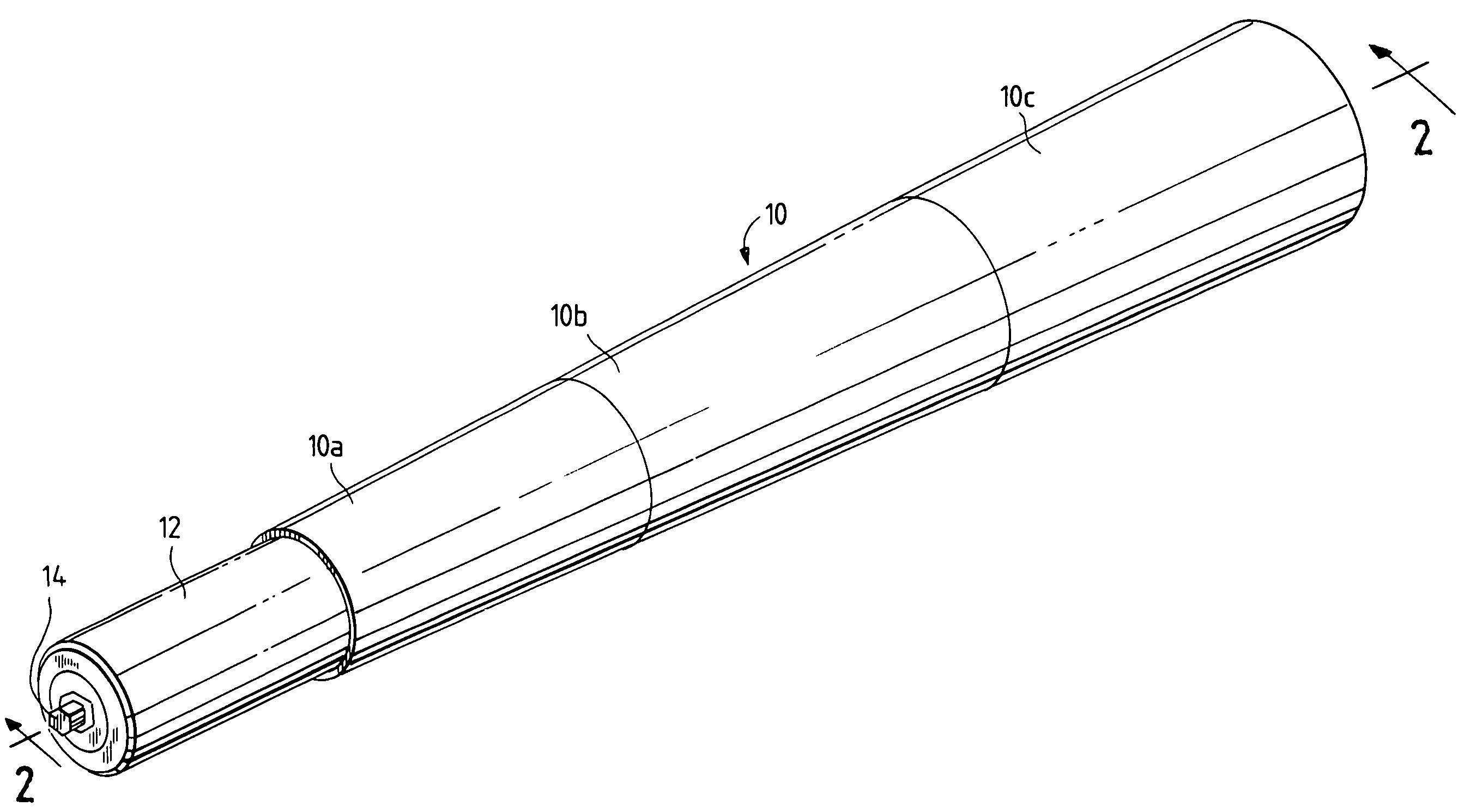Taper sleeve for conveyor roller
a conveyor roller and taper technology, applied in the direction of conveyor parts, rollers, transportation and packaging, etc., can solve the problems of adding to the cost and weight of the taper, and achieve the effect of saving material and weight, and minimizing the thickness of the wall
- Summary
- Abstract
- Description
- Claims
- Application Information
AI Technical Summary
Benefits of technology
Problems solved by technology
Method used
Image
Examples
Embodiment Construction
[0008]Plastic tapered sleeve 10 is mounted on a cylindrical core 12 which may be a cylindrical carrying roller for a conveyor. The core has axles 14 for mounting between the conveyor side plates (not shown). Sleeve 10 is preferably composed of segments 10a, 10b, and 10c which join to provide a tapered roller surface.
[0009]Each sleeve segment has a tapered wall 16, FIG. 3, of uniform thickness and having internal radial ribs 18. The inner edges 20 of the ribs rest on the surface of cylindrical core 12 and have interference fit with the surface. Alternatively, or additionally, the inner edges of the ribs may be secured to the core surface with an adhesive, as at 21.
[0010]Typical roller conveyors have a minimum width of 18 inches and are increased in size in 6-inch steps. The smallest segment 10a of the sleeve has a length of 5 inches and successive segments, 10b, 10c have a length of 6 inches. Two segments with a length of 11 inches are used for an 18 inch conveyor. Additional 6-inch ...
PUM
 Login to View More
Login to View More Abstract
Description
Claims
Application Information
 Login to View More
Login to View More - R&D
- Intellectual Property
- Life Sciences
- Materials
- Tech Scout
- Unparalleled Data Quality
- Higher Quality Content
- 60% Fewer Hallucinations
Browse by: Latest US Patents, China's latest patents, Technical Efficacy Thesaurus, Application Domain, Technology Topic, Popular Technical Reports.
© 2025 PatSnap. All rights reserved.Legal|Privacy policy|Modern Slavery Act Transparency Statement|Sitemap|About US| Contact US: help@patsnap.com


